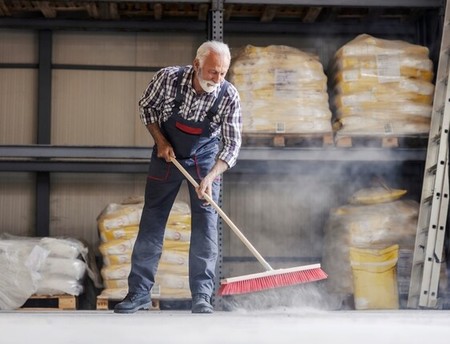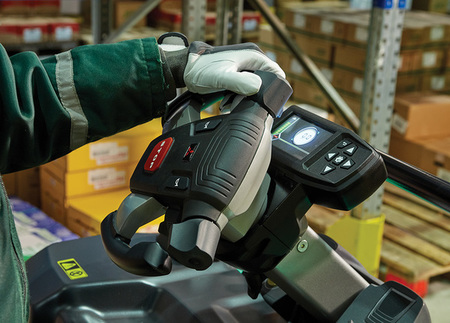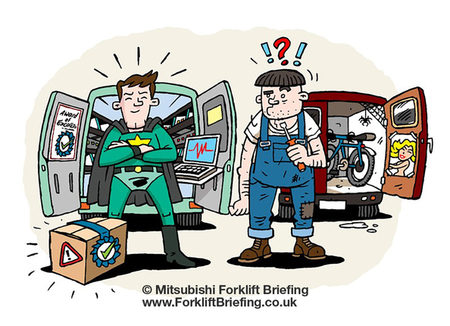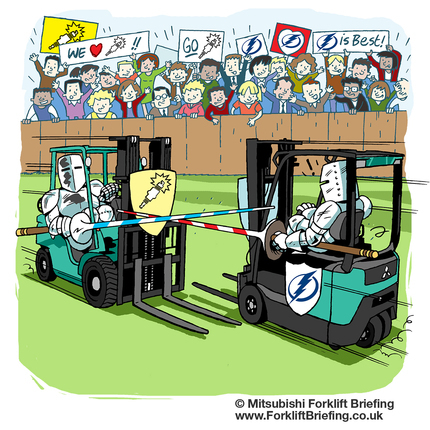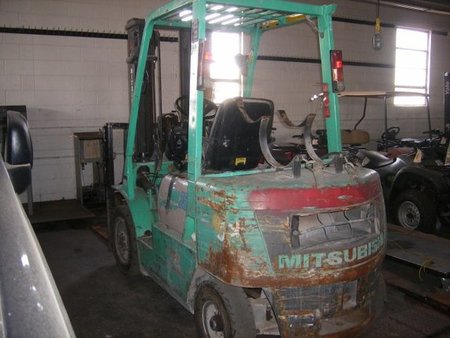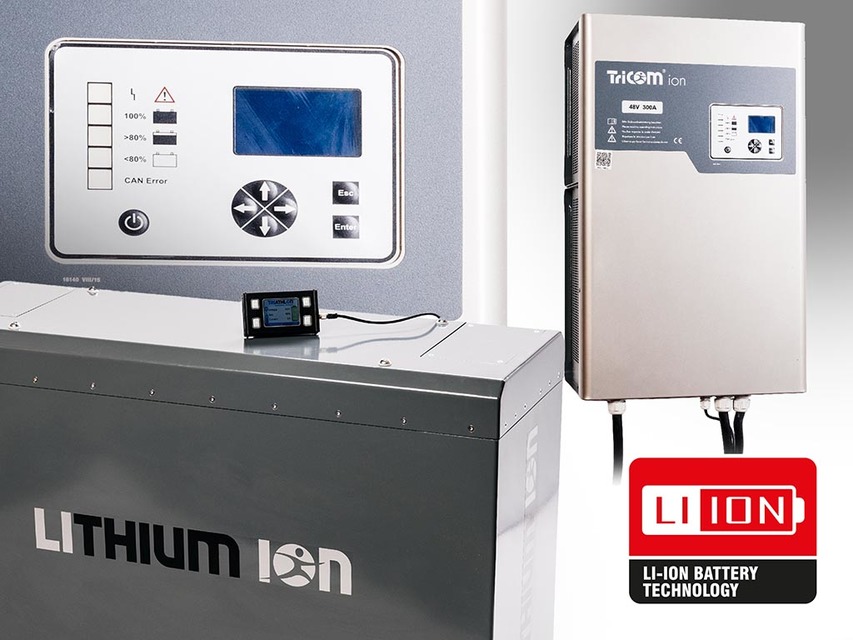
Li-Ion technology
When to consider Li-ion batteries for your materials handling application
Lithium-ion batteries are a relatively new technology, having been first introduced in the 1990s.
Today, Li-ion batteries are perhaps best known for their use in a variety of portable electronic devices and cars, but these modern energy sources are also increasingly being specified in materials handling equipment.
The most obvious difference is that they are much more compact and energy-dense than traditional lead-acid batteries. At Mitsubishi Forklift Trucks, Li-ion technology is now available – as an option – in almost all electric counterbalance and warehouse truck ranges.
That leaves many materials handling professionals with questions: what are the differences and when do you choose what? We will explain what your options are.
Certainly, lead-acid batteries remain a popular choice for many companies, probably due to their lower purchase costs compared to Li-ion. In applications where forklifts work in single shifts, or at a low intensity in general, it may be a long time before the higher investment of Li-ion is earned back.
However, the advantages can’t be ignored. Here are three big ones:
1. Li-ion is much more efficient
Overall, whichever battery you use will not make a difference in operating the truck itself. It does, however, make a big difference to your materials handling operation. The efficiency of a lithium-ion battery is much higher, and in addition you can run it down to 90% before charging is really necessary. Then, there are the charging and runtime benefits, gained through lower energy losses (up to 30%). The resulting energy savings partially offset the purchase cost of a Li-ion battery. Everybody likes a lower energy bill!
2. No more battery changing
Another noticeable change comes with fast-charge opportunities, comparable with the superchargers used with electric cars. During the lunchbreak, you may already recharge for many hours of extra runtime! In the traditional set-up, spare lead-acid batteries are constantly being charged to make the switch when needed. Swapping of batteries is labour-intensive, time-consuming and sometimes requires additional equipment. Besides this, lead-acid batteries need a fully prepared (costly!) and well-ventilated battery charging area. A Li-ion battery can be charged anywhere. Preferably close to the coffee corner…
3. Forget about daily maintenance
A lithium-ion battery has a closed structure and can be considered maintenance-free. During charging, the battery can remain onboard the truck and there is no need to top up with water or check the electrolyte. In fact, all the safety risks that come with changing lead-acid versions become a thing of the past!
As we stated, the switch to Li-ion requires a higher initial investment, but this should be analysed against savings on energy, equipment, labour and downtime. Due to their longer life (3-4 times longer), Li-ion batteries will probably show better Total Cost of Ownership figures. As is so often the case, the characteristics of your operation will point you in the right direction.
- ACTIONS
- Make a calculation overview of your current battery management process, including labour for battery exchanging and battery room maintenance
- Make an appointment with your materials handling supplier to check if Li-Ion could be beneficial to your operation
